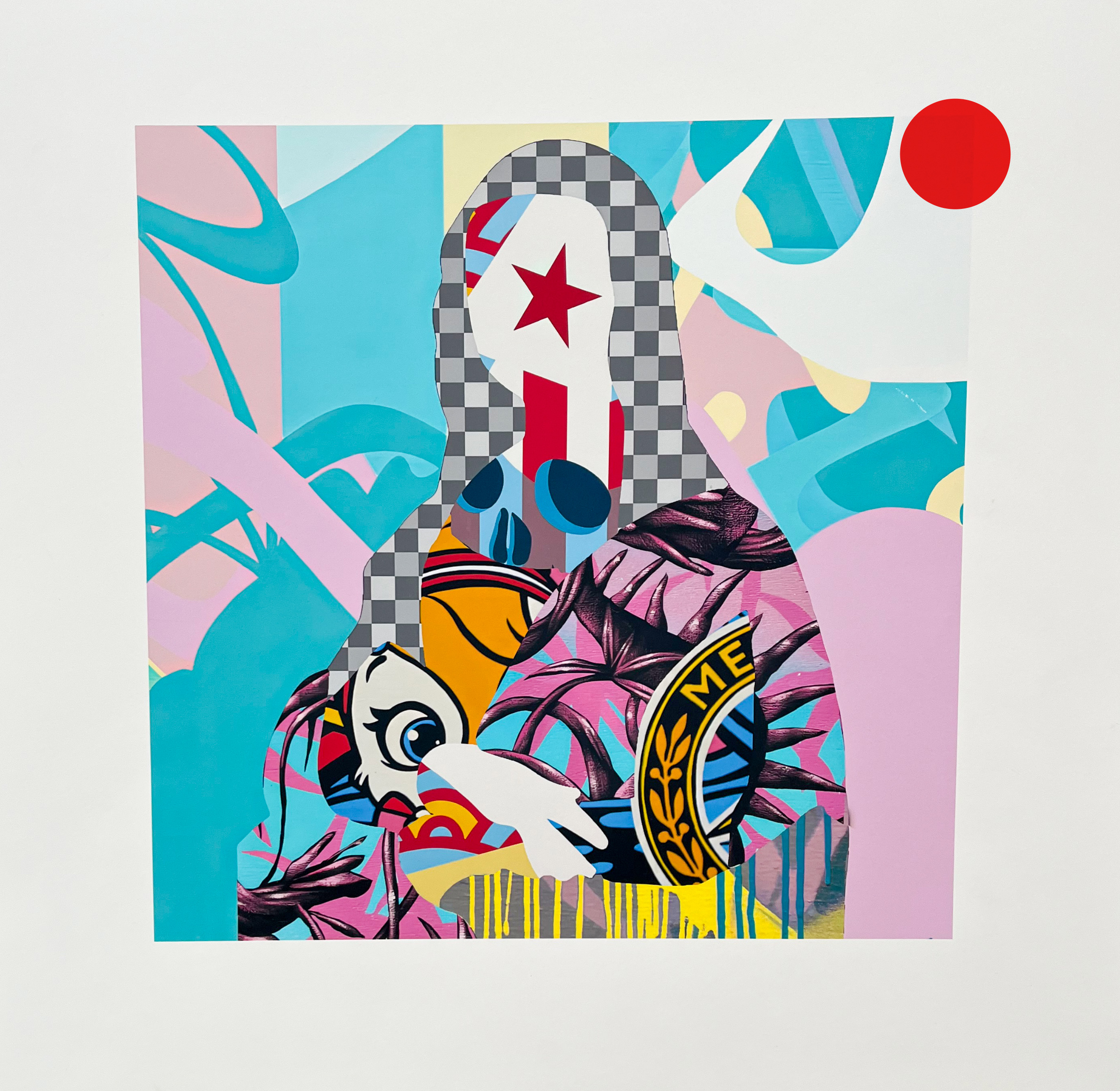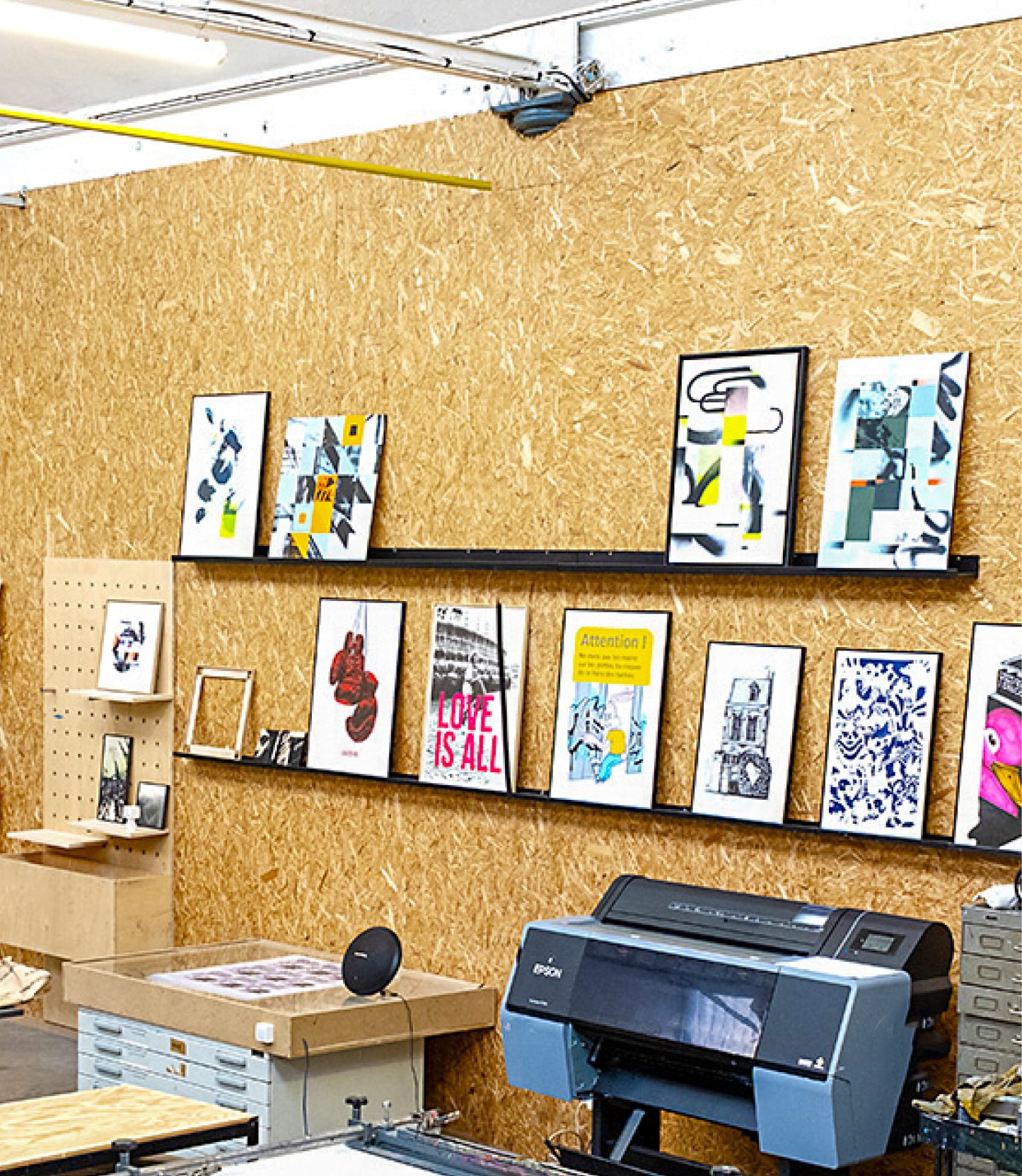Digital  L’impression
L’impression
Fine Art
 L’impression
L’impression Fine Art
L’atelier Kencre propose également un service d’impression Fine Art haut de gamme, réalisé avec des encres pigmentaires et sur papiers d’art 100 % coton. Grâce à notre traceur Epson, nous reproduisons avec précision vos œuvres, dans le format et le nombre d’exemplaires souhaités. Chaque tirage restitue avec fidélité la subtilité des détails, l’intensité des couleurs, pour un rendu d’une grande qualité, prêt à être exposé.
Savoir-faire
& qualité
& qualité
Nous comprenons et interprétons avec attention les exigences et les envies de chaque artiste pour chaque tirage Fine Art. Nous travaillons à partir de fichiers numériques en haute définition et ajustons les rendus colorimétriques afin de rester au plus proche de l'œuvre originale. Une véritable relation de confiance s’instaure, où nous mettons notre expérience et notre exigence au service de chaque création.
Nous apportons un soin particulier à la qualité des encres et des papiers que nous utilisons. Les encres pigmentaires garantissent une excellente tenue dans le temps, et les papiers d’art 100 % coton, assurent un rendu exceptionnel.
Nous avons la chance de collaborer avec des artistes du monde entier et assurons les livraisons en France et à l’étranger.
Nous avons la chance de collaborer avec des artistes du monde entier et assurons les livraisons en France et à l’étranger.

L’impression
Fine Art
c’est quoi ?
Fine Art
c’est quoi ?

L’impression Fine Art est un procédé d’impression jet d’encre pigmentaire de très haute qualité, réalisé à l’aide de traceurs professionnels. Elle permet de reproduire une œuvre avec une fidélité remarquable, restituant la finesse des détails, la subtilité des couleurs et la profondeur des noirs. L’encre est déposée en micro-gouttelettes sur un papier d’art 100 % coton, spécialement conçu pour garantir une durabilité optimale. Le résultat : un tirage haut de gamme, à la fois précis, stable et intemporel. Chaque impression devient une pièce d’exception, pensée pour être conservée, exposée et admirée.
Engagement Notre charte
qualité :
qualité :
L’impression Fine Art permet un rendu exceptionnel, avec des couleurs riches et nuancées, et une profondeur des noirs fidèle à l’original. Un choix idéal pour sublimer chaque détail de l’œuvre.
L’impression Fine Art offre une restitution fidèle des couleurs et des noirs profonds grâce à l’utilisation d’encres pigmentaires de qualité supérieure. Ce procédé permet de capturer chaque détail avec une grande précision, tout en garantissant une durabilité exceptionnelle des tirages.
Grâce à l’utilisation de papiers d’art 100 % coton, l’impression Fine Art permet de sublimer chaque nuance et texture de l’œuvre. Cette technique donne également une grande liberté créative .
Chaque tirage est soigneusement réalisé, numéroté et signé par l’artiste, ce qui garantit son authenticité et sa singularité. Chaque impression devient ainsi une pièce d’exception, parfaitement adaptée pour être exposée et conservée sur le long terme.
Grâce à l’utilisation de papiers d’art 100 % coton, l’impression Fine Art permet de sublimer chaque nuance et texture de l’œuvre. Cette technique donne également une grande liberté créative .
Chaque tirage est soigneusement réalisé, numéroté et signé par l’artiste, ce qui garantit son authenticité et sa singularité. Chaque impression devient ainsi une pièce d’exception, parfaitement adaptée pour être exposée et conservée sur le long terme.

Ce qu’il faut
savoir !
savoir !

Format
Les impressions peuvent être réalisées dans des formats personnalisés, allant jusqu'à 60 cm de large sur la hauteur de votre choix, pour s’adapter parfaitement à vos besoins
Impressions
Pour nos impressions, nous utilisons l’Epson, un traceur professionnel réputé pour son extrême précision. Grâce à sa technologie jet d’encre pigmentaire et son système de 12 couleurs, il restitue une large gamme chromatique, avec des noirs profonds, des dégradés subtils et une fidélité remarquable.
ЄN₵RЄ & PAP¦ER
→ L’encre pigmentaire que nous utilisons offre un rendu exceptionnel, à la fois profond et durable. Composée de 12 couleurs, dont le vert, l’orange et le violet, elle permet une grande richesse chromatique et une justesse des tons. Sa formulation garantit une excellente tenue dans le temps, des noirs denses, ainsi qu’une belle intensité des couleurs, fidèle à l’œuvre originale.-
→ Le papier que nous utilisons est composé à 100 % de coton, sans acide, et répond aux plus hautes exigences de conservation. Disponible en laize de 60 cm, il offre une grande liberté dans la hauteur des tirages, s’adaptant aussi bien aux formats classiques qu’aux créations plus audacieuses.
Un peu
d’histoire…
d’histoire…

L’impression Fine Art naît de la rencontre entre tradition artistique et innovation technologique. D’abord associée aux beaux-arts classiques – peinture, gravure, photographie argentique – elle évolue dans les années 1980 avec l’arrivée des traceurs jet d’encre professionnels et des encres pigmentaires. Ce tournant marque le début d’une nouvelle ère : celle du tirage d’art de haute qualité, fidèle à l’œuvre originale et conçu pour durer dans le temps.
Le terme “Fine Art” désigne aujourd’hui un standard d’excellence dans l’impression : précision des détails, richesse des couleurs, profondeur des noirs, douceur des matières. Les tirages sont réalisés sur des papiers 100 % coton, sans acide, souvent texturés, dont les fibres naturelles assurent une longévité exceptionnelle. Associés à des encres pigmentaires de qualité archive, ils garantissent une résistance à la lumière pouvant aller jusqu’à 100 ans, selon les conditions de conservation.
Utilisée par les photographes d’art, plasticiens, illustrateurs, galeries et musées, l’impression Fine Art permet de créer des séries limitées, d’éditer des œuvres numériques ou de reproduire des originaux avec une fidélité remarquable. C’est un processus exigeant et sensible, qui allie précision technique et respect de la démarche artistique.
Aujourd’hui, l’impression Fine Art s’impose comme une véritable prolongation de la création : elle transforme le tirage en un objet précieux, porteur d’émotion, de lumière et de matière
Le terme “Fine Art” désigne aujourd’hui un standard d’excellence dans l’impression : précision des détails, richesse des couleurs, profondeur des noirs, douceur des matières. Les tirages sont réalisés sur des papiers 100 % coton, sans acide, souvent texturés, dont les fibres naturelles assurent une longévité exceptionnelle. Associés à des encres pigmentaires de qualité archive, ils garantissent une résistance à la lumière pouvant aller jusqu’à 100 ans, selon les conditions de conservation.
Utilisée par les photographes d’art, plasticiens, illustrateurs, galeries et musées, l’impression Fine Art permet de créer des séries limitées, d’éditer des œuvres numériques ou de reproduire des originaux avec une fidélité remarquable. C’est un processus exigeant et sensible, qui allie précision technique et respect de la démarche artistique.
Aujourd’hui, l’impression Fine Art s’impose comme une véritable prolongation de la création : elle transforme le tirage en un objet précieux, porteur d’émotion, de lumière et de matière
